Scroll for prep

Please wait…
This video is having trouble loading. You may have lost your Internet connection.
Step 1: Click to Reload this page
Step 2: Click to
Try our other video player
Step 3: Contact your teacher if trouble persists.
Or,
dismiss this message.

Please wait…
This video is having trouble loading. You may have lost your Internet connection.
Step 1: Click to Reload this page
Step 2: Click to
Try our other video player
Step 3: Contact your teacher if trouble persists.
Or,
dismiss this message.

Please wait…
This video is having trouble loading. You may have lost your Internet connection.
Step 1: Click to Reload this page
Step 2: Click to
Try our other video player
Step 3: Contact your teacher if trouble persists.
Or,
dismiss this message.

Please wait…
This video is having trouble loading. You may have lost your Internet connection.
Step 1: Click to Reload this page
Step 2: Click to
Try our other video player
Step 3: Contact your teacher if trouble persists.
Or,
dismiss this message.
You may not be able to take a field trip into a deep, dark cave, but you can make a Dark Box that lets students experiment with seeing in dim light and darkness.
Go to the next slide for instructions.
A Dark Box is an opaque box with a hole in one end. Students take turns placing a message inside the box and trying to read the message through the opening. How much light do they need to see the message clearly? Students learn that they can see objects only when light shines on them. See Activity Prep below.
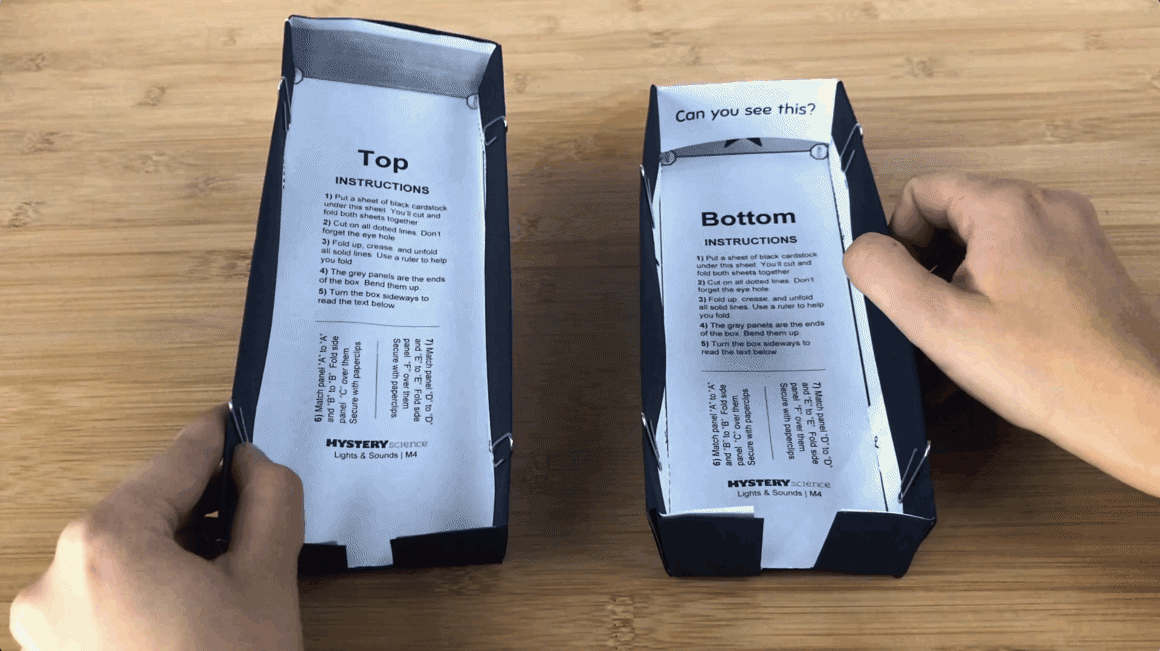

Anchor Connection
In the past lesson, you read a story. Two people were exploring a cave. One person
thought he could see without any light.

But when they turned out their lights in the cave, this was all they could see.
Discuss. Why did the cave look like this when they turned out their lights? Why
couldn’t they see anything?

When they turned out their lights, it was completely dark. You cannot see things
when it is completely dark. You need light to see things.
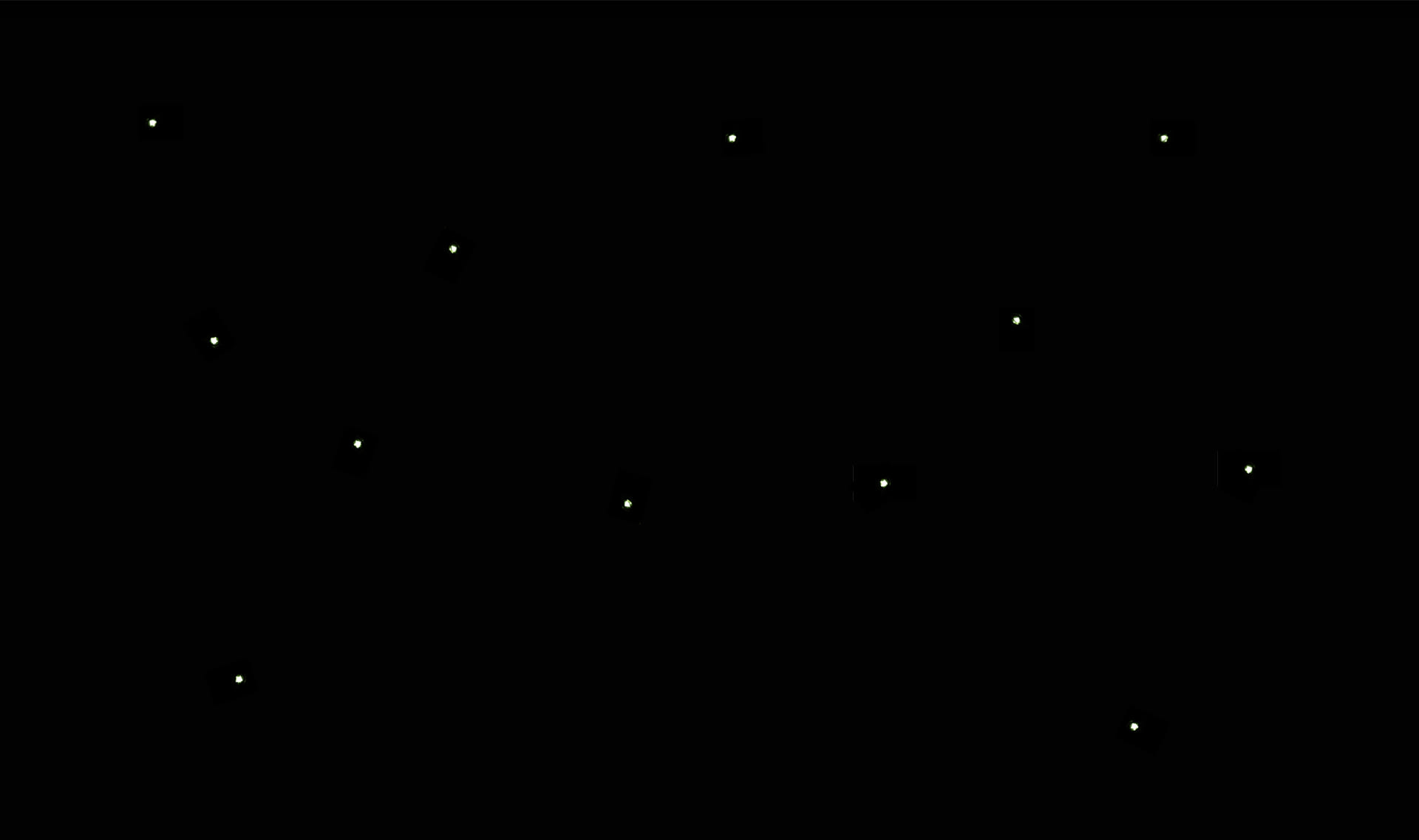
Two lessons ago, we saw a kind of animal that looks like this. We could see it even
though the night was completely dark. Discuss. How do you think we could see this
kind of animal if it was completely dark outside?
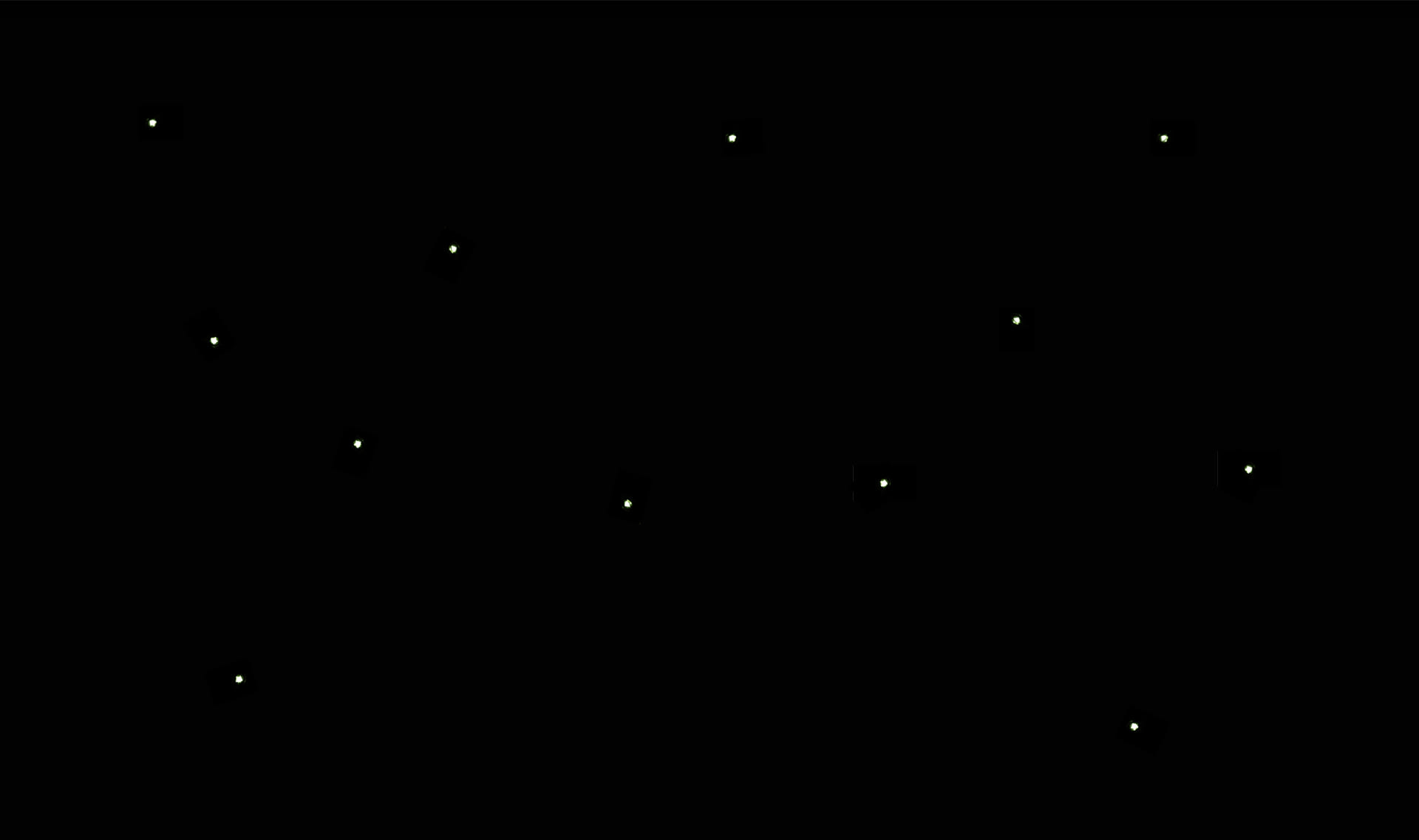
You can see this kind of animal because it makes its own light! Some people call this
kind of animal a firefly. Other people call it a lightning bug. They are easy to find at
night because they glow when everything else is dark.

There are many kinds of fireflies. These pictures show one firefly on its feet and
one laying on its back. Discuss. Which part of the firefly do you think lights up?
Why do you think that?

Please wait…
This video is having trouble loading. You may have lost your Internet connection.
Step 1: Click to Reload this page
Step 2: Click to
Try our other video player
Step 3: Contact your teacher if trouble persists.
Or,
dismiss this message.
Let’s watch a video of a firefly to see which part lights up. You might see it
better if you turn the lights off in the room.

The light comes from inside this part of the firefly’s body. Discuss. If the light can
shine through from the inside, is this part of the firefly’s body opaque, translucent,
or transparent?

You can’t clearly see through this part of the firefly’s body, but you can kind of see
through this part of the firefly’s body. That means it is translucent.
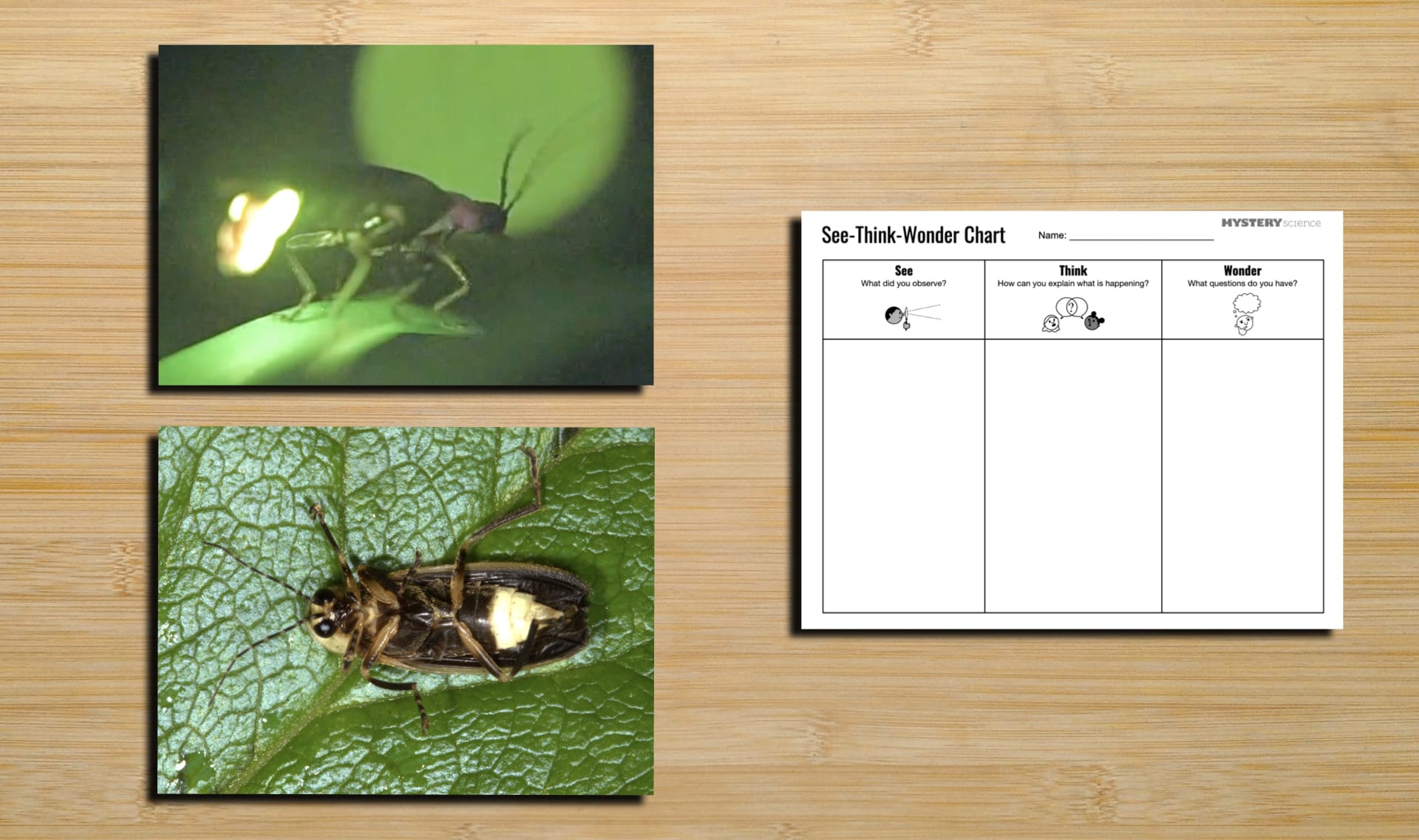
Look at the "Wonder" column of your See-Think-Wonder chart. Have any questions
been answered? Do you have any new questions? Save this chart. You will use it
after the next lesson.

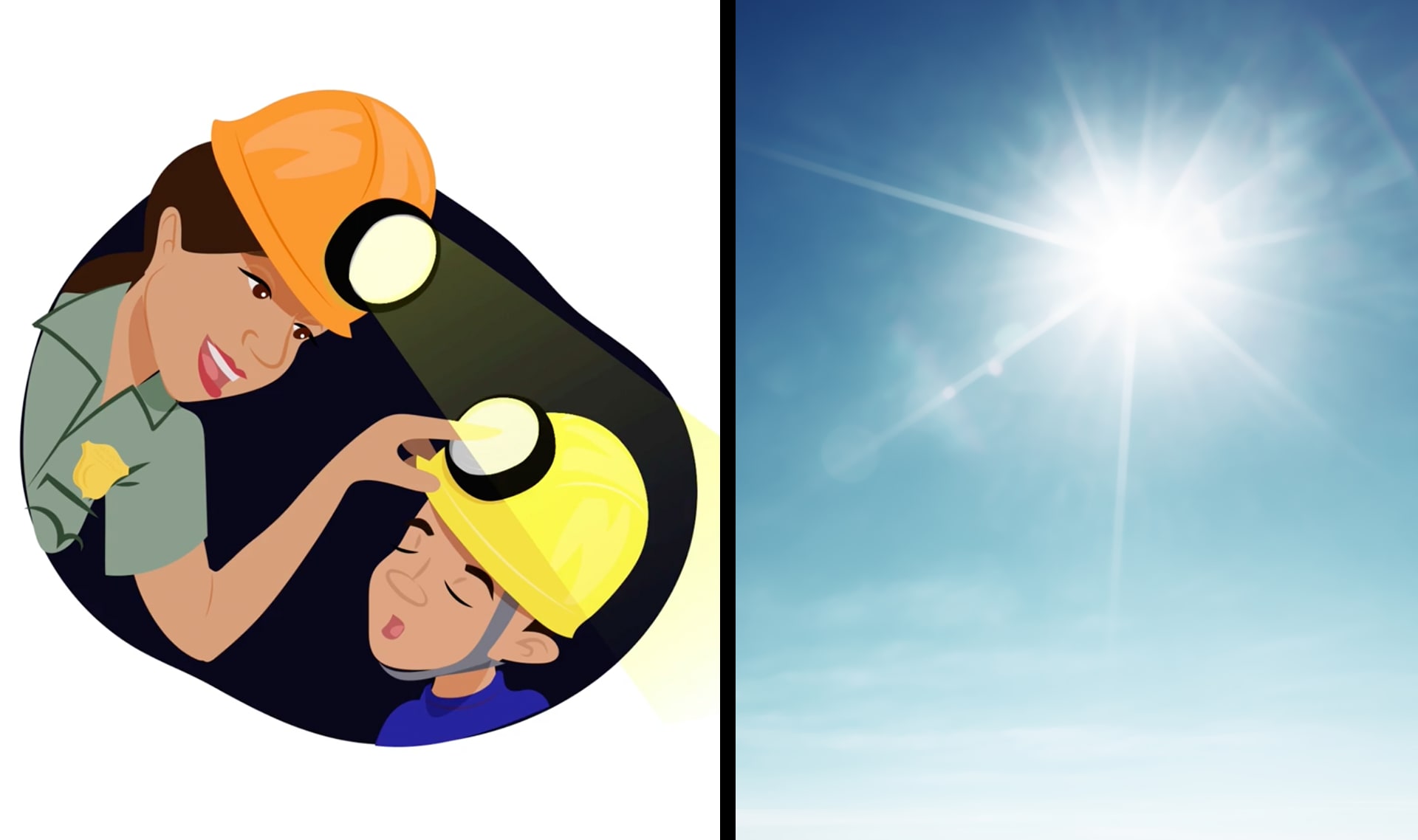
light
1 of 3
what comes from the Sun and lamps and makes it possible to see things

dark
2 of 3
very little or no light

Please wait…
This video is having trouble loading. You may have lost your Internet connection.
Step 1: Click to Reload this page
Step 2: Click to
Try our other video player
Step 3: Contact your teacher if trouble persists.
Or,
dismiss this message.
experiment
3 of 3
a test used to discover new information about a question



